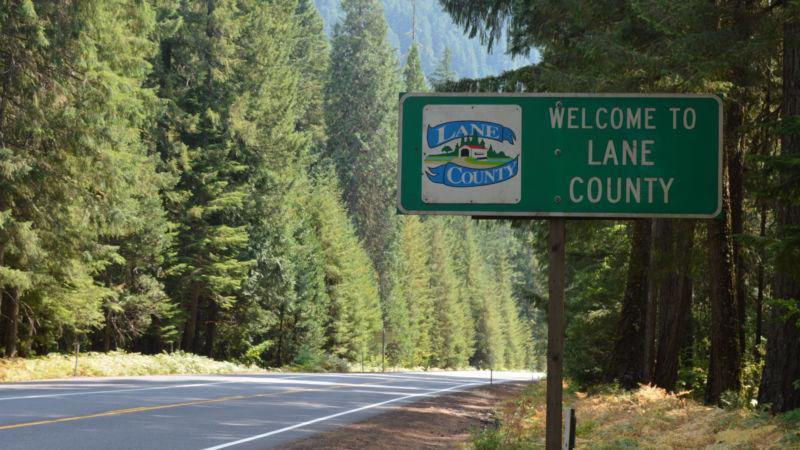Mike Cowles is in charge of assessment and taxation for Lane County, Oregon, a gorgeous part of the country that stretches from the rocky grandeur of the Pacific coast through the lush farmland of the Willamette Valley all the way to the Cascade Mountains. The county seat is Eugene, home of the University of Oregon. Cowles runs the assessment and taxing function for all 83 taxing districts in Lane County, including Lane County itself. Lane County was an early adopter of Thomson Reuters tax software, and as a courtesy assists several other Oregon counties with various process and conversion issues. He lives in downtown Eugene, blocks away from the city’s burgeoning brewery district, which he has been known to visit on occasion.
For a while now, Lane County’s tax base has been transitioning away from timber and agriculture to manufacturing, technology, and tourism. How are you managing the transition, and what are the biggest tax-revenue challenges in this cultural shift?
The shift from a traditional timber-based industry has been pretty difficult for Lane County in that the funding mechanism for the overall county has declined significantly with the decline in the timber industry. Ninety percent of Lane County is forest land, so the transition has been a challenge. But we’ve had great increases in manufacturing, as well as all the cottage industries associated with manufacturing. We’ve also had new industries pop up, such as our burgeoning brewery district in Eugene. On the assessment and taxation side, as we get these new industries, a lot of it is training staff, learning new ways of assessing these properties to ensure that everyone is fairly and adequately assessed.
In the business sector, what are the most promising industries and development opportunities?
The top-ranked industry is healthcare. The other area where we’re seeing significant growth is in a lot of small, cottage-industry businesses. We have a fairly favorable tax system for what is called “enterprise zones,” where businesses receive tax benefits and breaks for investments. Enterprise zones are located throughout the county in strategic areas. They allow businesses to come in and make investments, certain parts of which—such as infrastructure, or investments in machinery and property — are tax-exempt for three to five years. We’re not particular about the types of businesses that take advantage of the enterprise zone program, so it ranges from small businesses to very large businesses.
In order to spur economic development, Lane County adjusted its tax structure to make the county more attractive to businesses and entrepreneurs. Are there any other ways you’ve used tax policy to encourage economic growth?
On the economic side for agriculture, we have various strong laws and special assessment programs available. Lane County is located in what’s called the “agricultural belt,” and the Willamette Valley is one of the most productive areas in the nation. So we have national and international corporations that not only trade in lumber and wood products, but also nursery crops, Christmas trees, grass seed, etc. Oregon also has favorable land-taxation programs for resource properties such as farms and forest land, which help offset the cost through a reduction in the tax burden, and ensure that the land stays in agricultural use or forest-land use. You don’t see much urban sprawl in Lane County because the jurisdictions have fairly tight zoning and land-use regulations.
How important have recent efforts to boost tourism been to the county’s revenue stream?
Tourism goes hand in hand with retail trade, and one of the top revenue items for Oregon is tourism. Lane County is such a beautiful area. You can go to the ocean in the morning for surfing, then drive across the county and go skiing in the mountains in the afternoon. Our diversity of infrastructure and geography really spurs tourism in Lane County. Tourism is very important, in that many of the businesses in Lane Country — the winery industry, for example — rely on it. In 2015, visitors spent approximately $633 million in Lane County.
Have any other parts of your economy expanded or grown?
Construction has been a big part of our employment. Lane County’s economy has been doing great since the recession that started in 2007. We’ve experienced a five-year period of prolonged growth, and construction goes hand in hand with the increase in manufacturing and the increase in the number of family dwellings being built. We also have a number of tech-based companies, which we expect to see more of in the future.
Have these different areas of growth countered the general decline in the logging industry?
Lane County is much more diversified now than it has been in the past. Our housing recession started in 2007, and ended in 2012. During that period, every sector except healthcare experienced losses in employment, and unemployment peaked at about 13 percent in 2009. Right now, unemployment is at or below four percent. It’s a double-edged sword in that it’s harder now to find good employees, but it definitely is a strong indication that we have a diverse economy and can weather recessions.
Have real-estate valuations bounced back as well?
They have. Now, real-estate values approximately equal their peak in 2007. The nice thing about the values for 2017 versus back in 2007 is that we’ve experienced moderate growth every year since 2012 — between three and nine percent growth per year in housing prices. Leading up to 2007, growth came in bigger spurts and wasn’t sustainable. The growth we’ve seen since then has been consistent and moderate. That’s nice to see, because those exuberant markets are unsustainable.
Your tax and assessment systems are integrated. How does that benefit the taxpayers of Lane County and other stakeholders, such as the school districts?
We have 83 different taxing districts in Lane County, so we assess and collect for all 83 districts. These districts vary from the schools and cities to special districts (fire and library, for instance), so Lane County itself only receives eleven cents for every dollar we collect. A large portion of the work we do is for the other taxing districts, so it’s extremely important to have fair and accurate assessments and calculations. Over the years we’ve had many changes in our tax laws, and Thomson Reuters software has been accommodating for those statutory and legislative changes, which is very important.
As a courtesy, Lane County provides some technical support to seven other counties in Oregon. How does that relationship work in practice? Is it beneficial to all, or are there some downsides?
Lane County TS (Technology Services) provides the primary IS (Information Services) support for the Eastern Oregon Counties and we (Assessment and Taxation) work with these counties on an as-needed basis for business process and conversion questions, and on the supplemental-user support side. When counties ask for help, we are more than happy to assist, but we do it as a courtesy, not as part of the TS support agreement. That said, providing taxation software assistance to other counties is beneficial to everyone in large part because we’re able to share our knowledge and experience with counties as they convert to new software, or with hot patches and other software changes. Also, if there’s a state-mandated report, instead of rebuilding that report we can use it and tweak it so that it works for other counties, so they don’t have to re-invent the wheel. The downside would be that it is a resource we are not directly compensated for, but the advantage is that it definitely gives us other opinions, ideas, and thought processes that help us stay on track with regarding current statutes and laws.
What role does the University of Oregon play from a tax assessor’s perspective?
The majority of the University of Oregon is exempt from taxation, so from a tax assessor’s perspective it’s more of an economic hub for the Eugene/Springfield area of Lane County. The draw of, for example, the popularity of Duck games has resulted in three or four new hotels being built here. The tourism generated by sports and other activities at the U of O is an important draw. It’s also the second-highest employer in Lane County, with nearly 5,500 employees. By creating jobs, providing wages and benefits, tourism helps people maintain a certain standard of living — which, for taxation purposes, means people can afford nicer houses, and can patronize local businesses. The university also contributes to our having a highly educated workforce, which attracts businesses that pay higher wages.
You not only are an active member of the Oregon Thomson Reuters User Community (ORTUG), you’re one of its leaders. How important are these types of peer networks to the operational success of your office?
They’re extremely important. The Oregon legislature can be very prolific in terms of bills that have an impact on the taxation system. It’s hard for brand new assessors, because of all the statutes and laws and regulations. Without strong guidance from your peers, it would be extremely difficult. Also, we work together to provide educational opportunities and sponsor classes, and aren’t afraid to speak up when new legislation adversely affects tax districts either directly or indirectly.
Where’s the best place to get a local beer in Eugene?
My favorite is Steelhead Brewing, which is in downtown Eugene, a short walk from my apartment. I like their Hefeweizen. But in the Whiteaker neighborhood, which is also a short walk away, there are number of craft breweries, including Ninkasi, Hop Valley, Oakshire, Falling Sky, and Sam Bond’s Brewing Co. This area is Eugene’s primary brewery district, and there are now a dozen separate craft breweries in greater Eugene.







